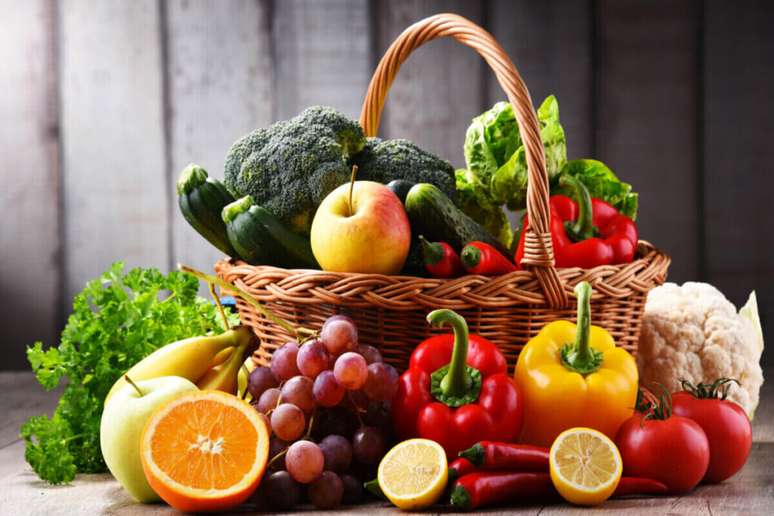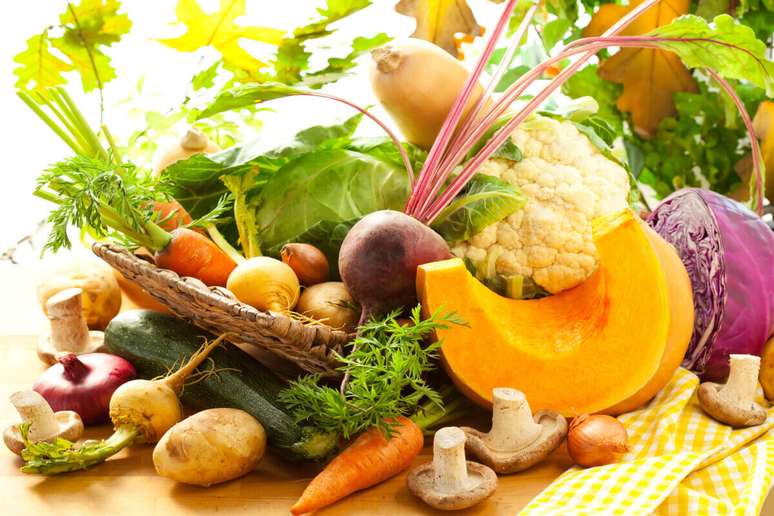Find out which foods boost your body’s health and well-being during the season
Autumn began in March and ends in June. As winter approaches, temperatures and humidity tend to decrease and this can predispose you to colds, flu and allergies. To help the body minimize these impacts, it is essential to strengthen the immune system. A great way to do this is to increase your fruit and vegetable consumption.
We can improve our health by increasing the consumption, for example, of some foods rich in key nutrients, such as vitamins A and C, zinc and iron, which are among the main boosters of the immune system and are easily found in autumn and tend to cost less .
With this in mind Eduardo Petrelli, food retail specialist and CEO of Mercado Dentro (to boot of organic foods) explains the importance of seasonal foods. Watch!
What foods are in season?
Seasonal or seasonal foods are grown and harvested naturally in the most favorable time of year for cultivation, respecting their specific conditions, growth, climatic needs, soil conditions, sunlight, temperature and precipitation. I mean, I am Food collected at the right time.
Vegetables are divided into species that adapt differently to the climate of each season and also to the place where they are grown. And this is how nature determines the foods that will be produced in winter, summer, autumn and spring.
Why are seasonal foods more nutritious?
Because they follow the cycle of nature and develop according to natural and ideal climatic conditions, seasonal foods capture more nutrients from the soil and better develop their natural defenses against insects and pathogens, leaving them with its more intense and vibrant colors and, consequently, more nutritious. Therefore, they are at their peak freshness, flavor and texture and have a higher content of nutrients such as vitamins, minerals, antioxidants and phytochemicals.

Typical autumn fruits and vegetables
Next, discover 9 typical autumn fruits and vegetables!
1. Persimmons
A fruit very present in autumn, the persimmon is a source of vitamins A and C and antioxidants such as beta-carotene. It’s a great option as a dessert or mid-course snack.
2. Avocado
Avocado is rich in fiber, a source of vitamins A, C and K, folic acid and minerals such as phosphorus, magnesium, zinc and potassium. Furthermore, it is a great source of fats healthy foods that help control total cholesterol.
3. Guava
Guava is rich in fiber, antioxidants and vitamin C. It is a good option for in-between snacks.
4. Lemon and orange
Excellent sources of vitamin C, lemon and orange are essential for strengthening the immune system, as well as contributing to iron absorption and healthy skin.
5. Pumpkin
Rich in fiber, vitamin A and antioxidants, such as beta-carotene, which work to strengthen immunity and eye health. Pumpkin soup or roasted pieces with rosemary are options to make cool autumn nights more welcoming.
6. Chayote and kale
Rich in fiber, chayote and kale promote gut health, contributing to a healthier microbiota and strengthening the immune system. Roasted and seasoned with salt, pepper and turmeric, they are quite tasty.
7. Broccoli and rocket
A highly nutritious duo, broccoli and arugula are a source of calcium, phosphorus, magnesium, vitamins C and A and antioxidants, which cannot be missing in everyday life. Try including them in two main meals.
8. Papaya
Papaya is rich in vitamins A and C, antioxidants and fibers. It helps strengthen the immune system, acts on intestinal health and increases the feeling of satiety.
9. Passion fruit
Rich in vitamins A and C and antioxidants, passion fruit helps strengthen the immune system and improve eye health. It could be a good option for trembles breakfast or juices to accompany meals.
By Renato Caliman
Source: Terra
Ben Stock is a lifestyle journalist and author at Gossipify. He writes about topics such as health, wellness, travel, food and home decor. He provides practical advice and inspiration to improve well-being, keeps readers up to date with latest lifestyle news and trends, known for his engaging writing style, in-depth analysis and unique perspectives.









